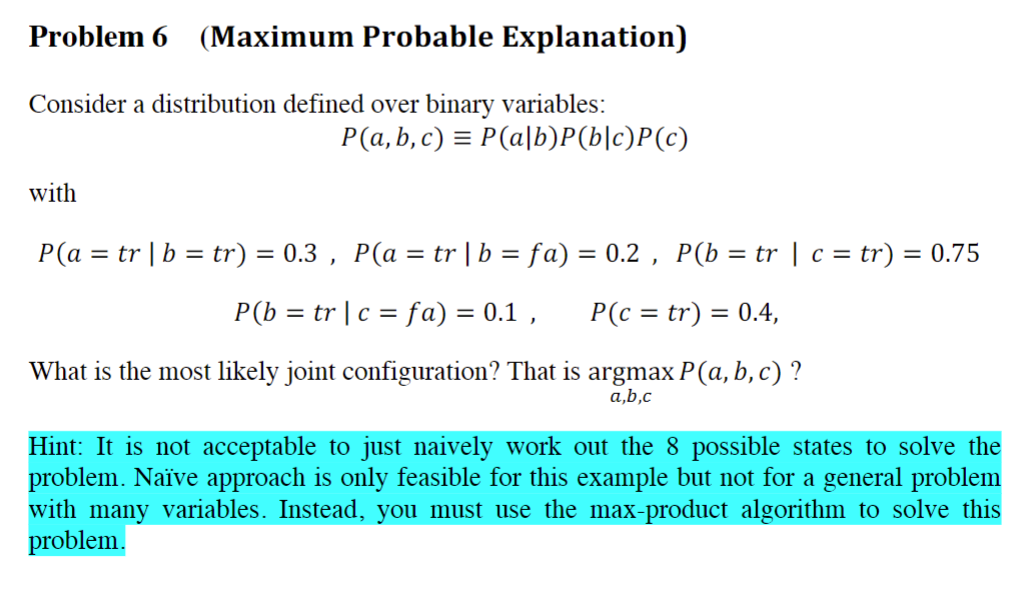Answered step by step
Verified Expert Solution
Question
1 Approved Answer
NEED DETAILED SOLUTIONS, THX!!! Consider a distribution defined over binary variables: P(a,b,c)P(ab)P(bc)P(c) with P(a=trb=tr)=0.3,P(a=trb=fa)=0.2,P(b=trc=tr)=0.75P(b=trc=fa)=0.1,P(c=tr)=0.4 What is the most likely joint configuration? That is a,b,cargmaxP(a,b,c) ?
NEED DETAILED SOLUTIONS, THX!!!

Step by Step Solution
There are 3 Steps involved in it
Step: 1

Get Instant Access to Expert-Tailored Solutions
See step-by-step solutions with expert insights and AI powered tools for academic success
Step: 2

Step: 3

Ace Your Homework with AI
Get the answers you need in no time with our AI-driven, step-by-step assistance
Get Started


